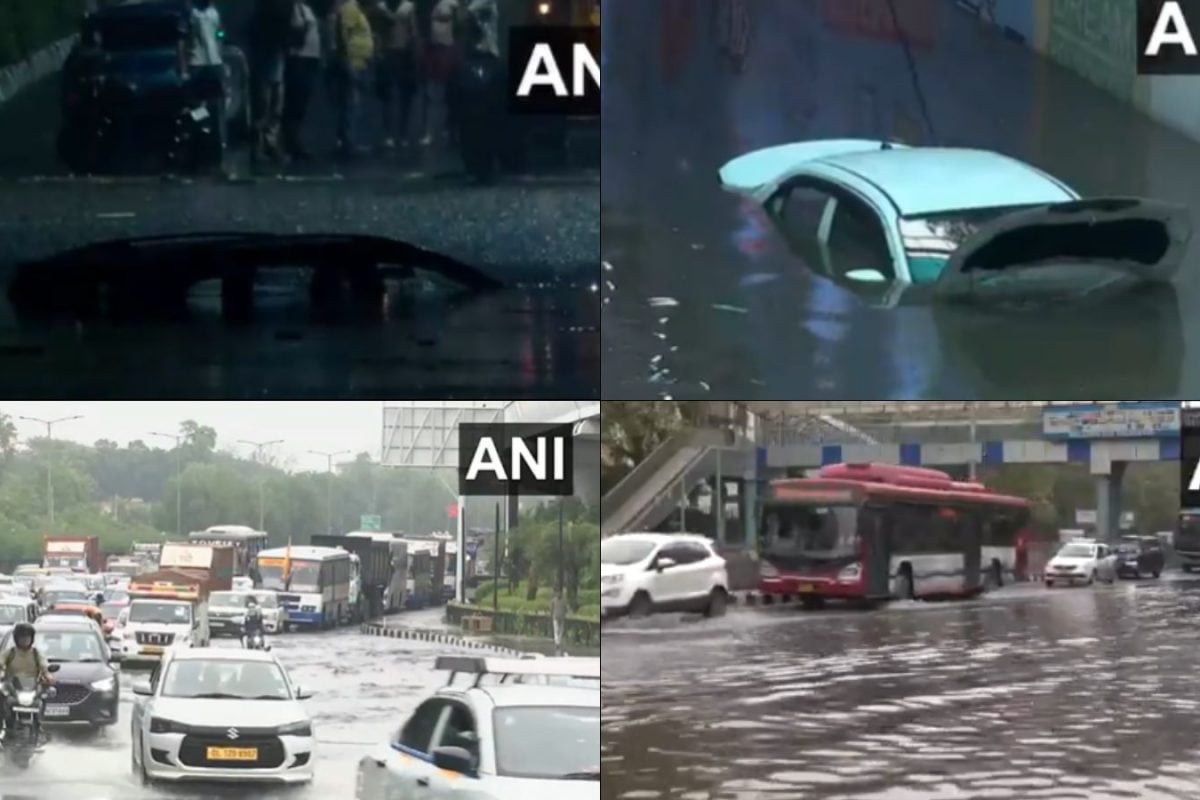

A sudden and intense downpour in Delhi has resulted in widespread chaos, with several areas witnessing significant waterlogging and traffic disruptions. The heavy rainfall, which lashed the city, submerged underpasses and key roads, leaving vehicles stranded and commuters struggling to navigate the flooded streets.
Several areas including Minto Road, RK Puram, Khanpur, Dwarka Underpass, South Extension, Ring Road, and Lajpat Nagar have been severely affected, with reports of cars submerged in knee-deep water. The deluge has brought traffic to a standstill, causing massive jams and leaving commuters stranded for hours. Visuals from various parts of the city depict vehicles wading through waterlogged streets, with two-wheelers and auto-rickshaws particularly vulnerable, often breaking down in the flooded underpasses.
The India Meteorological Department (IMD) had issued a red alert, warning residents of severe thunderstorms and squally winds, which exacerbated the situation. The heavy rain and strong winds have also led to other incidents, including fallen trees blocking roads and structural collapses. Tragically, in one such incident, four people lost their lives when a house collapsed in Najafgarh's Kharkari Nahar village due to heavy winds.
The impact of the rain was also felt at Indira Gandhi International (IGI) Airport, where over 100 flights were delayed and several others were diverted due to low visibility and strong winds. Airlines have advised passengers to check their flight schedules and stay updated on the latest information.
In the wake of the heavy downpour, Delhi Chief Minister Rekha Gupta has termed the situation in the city as "very bad" and emphasized the need for immediate infrastructural development. The government has deployed emergency teams to clear clogged drains and address waterlogged areas, with officials from the Public Works Department (PWD) instructed to expedite remedial work to prevent further disruptions.
The Municipal Corporation of Delhi (MCD) has also been actively involved in monsoon preparedness, conducting meetings to discuss measures for tackling waterlogging, improving sanitation, and ensuring public safety. Key issues being addressed include desilting of drains, appointment of nodal officers for waterlogging-prone areas, and deployment of labor gangs and supervisory staff at vulnerable points.
To mitigate the impact of such events, experts suggest several urgent actions. Clearing all drainage systems before the monsoon season, identifying flood-prone areas, establishing effective flood management solutions, and training emergency services are crucial steps. Additionally, timely and extensive public alerts regarding weather conditions and traffic advisories can help minimize the impact on citizens.
The Delhi government has also constituted quick response teams (QRTs) under the District Disaster Management Authority (DDMA) in all 11 districts of the capital to ensure preparedness ahead of the monsoon season. These teams will be responsible for a prompt and coordinated response to emergencies, especially those arising due to uprooted trees and other monsoon-related hazards and will remain operational till September 15.
As Delhi grapples with the aftermath of the heavy rainfall, the focus remains on immediate relief efforts, long-term infrastructure improvements, and enhanced disaster preparedness to minimize the impact of future extreme weather events. Strengthening urban infrastructure, improving drainage systems, and raising public awareness are essential steps to building a more resilient city.